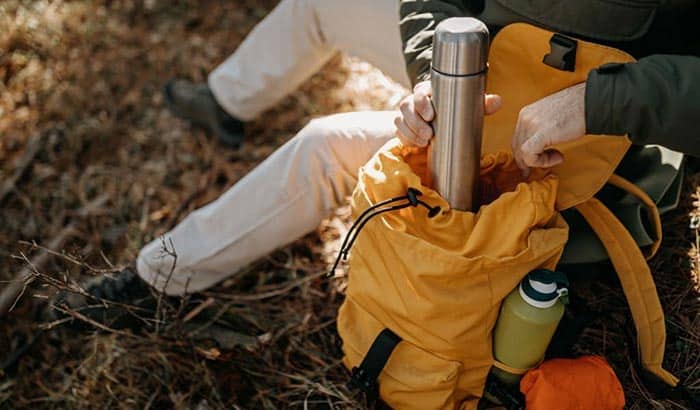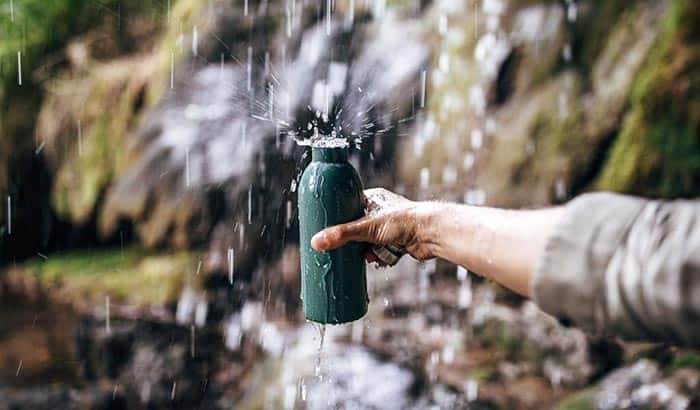Water is the most important item to pack when hiking – apart from your wits. On the one hand, you must ensure you have enough water for the journey to keep you hydrated. However, because water is so heavy to carry, you don’t want to pack too much. The question of how much water to bring on a hike requires much thought.
This post gives you general rules you can follow to help determine how much water for hiking you might need.
Contents
The Quick Answer
For every hour of hiking, adults typically require two cups of water. Every hour of hiking typically requires 1-2 cups for kids. Nevertheless, depending on whether you can filter water along the journey, the environment, and how thirsty you are, you might need more or less than this. Always bring more water than you think you’ll need for the hike, erring on the side of caution.
Calculating Your Water Needs
Aside from the general rule of two cups of water for every hour of hiking, you might want to factor in other aspects of a hike to determine how much water you will need.
The Length of the Hike
Determining the length of a hike can be a little challenging for someone who has never hiked before. Depending on the trail’s intensity and your fitness level, you’ll likely need between 30 and 60 minutes to walk a mile. Or it can take you two and a half hours to go a mile if you’re hiking with a young child.
The length of the trail and the anticipated time required to complete it are typically listed in trail guides. When you glance at the clock, be sincere with yourself. Don’t think that just because you are in good form, you can “complete the trail faster.” Additionally, allow more time if you are aware of your lower fitness level.
Cups of Water Per Hour
The general guideline for water requirements while hiking is as follows:
- Two cups (or half a liter) of water for every hour of hiking for adults.
- One to two cups of water for every hour of trekking for kids
Therefore, you should bring at least 10 cups (2.3 liters) of water per person if you estimate your hike will last for 5 hours. Keep in mind that these are only guidelines! Some individuals consume a lot more water than this. But it is a valuable rule to follow.
There is no concrete answer if you wonder how much water per mile hiking you will need. A mile of hiking may take much longer or less, depending on the terrain and incline. Therefore, the “cups per hour” method is more precise than the “cups per mile” one.
Lastly, you will need to drink more water on a hot day than on a cold one. That goes without saying. Get more than two or three cups of water each hour when it’s hot or humid.
Safe Sources of Water on the Hike Path
You can organize your hikes along reliable sources of water. Then, you can bring a portable water filter, so you don’t have to carry several water bottles. You can get water along the way and filter it using your device.
Note that the water source needs to be dependable. The creek indicated on the map may occasionally have dried up for the summer when you go hiking. Your water supply is gone! However, if there is a reliable water supply along your trek, you may estimate how much water you’ll need to get to the next water source.
Water only needs to be cleaned of germs and protozoa in the bush (even if it appears clean, it certainly contains some nasty stuff!). However, viruses can be an issue in some places, so you’ll need a water filter to get rid of them. Getting chemicals from agricultural runoff out of water is far more challenging.
How Thirsty Do You Get?
You might be a particularly thirsty person in general. You might need more water compared with other people. If you know that you require more water than what the first three general rules recommend, then you should bring a little bit more water.
Hydrating Tips
Now that you know how much water to bring on a hike, here are a few tips on keeping yourself hydrated during hikes.
Before Hiking
Start drinking water before you trek to hydrate yourself adequately. It’s really challenging for your body to catch up and get hydrated if you start dehydrated.
Drinking about two and a half cups of water within two hours of trekking is often advised. Avoid or limit your consumption of beverages, including iced tea, soda, and coffee. These coffee beverages have diuretic properties. Diuretics aid in the removal of salt (sodium) and water from the body.
While Hiking
Drinking frequently is essential to maintaining a healthy amount of hydration during hiking. So, how much water to drink while hiking? On mild days, you should drink half a cup of water every 10 to 15 minutes; on hot and humid days, you should double that amount.
Urine testing is one technique to make sure you’re getting enough water. It’s fine if it’s clear or light yellow. Continue drinking if it becomes darker than that.
Sometimes drinking water to stay hydrated is insufficient when hiking in scorching and humid conditions. You should add something to your water in this kind of setting. Gatorade powder or MiO liquid water enhancer are good recommendations.
These substances improve hydration when paired with water by replacing electrolytes like salt and potassium lost through sweat.
After Hiking
You’ll need to consume additional liquids to aid your body’s recovery once you’ve finished your day of hiking. Nobody wants to experience the discomfort of a charley horse (muscle spasm or cramps) in the middle of the night due to dehydration. After your day’s hike is through, drink about two and a half cups of water within the next two hours.
Hiking in the Cold
You’ll feel colder if you drink cold water. You will require an insulated water bottle that you can warm up before your hike. You’ll also need a water bottle with a massive lid that you can open while wearing gloves if it’s snowing or frigid.
Last Word
Before going on a long trek, you should consider how much water for hiking you’re going to need. The guidelines on calculating how much liquid you’ll need and the tips on keeping yourself hydrated when hiking would help you keep yourself safe from the crippling effects of dehydration.


